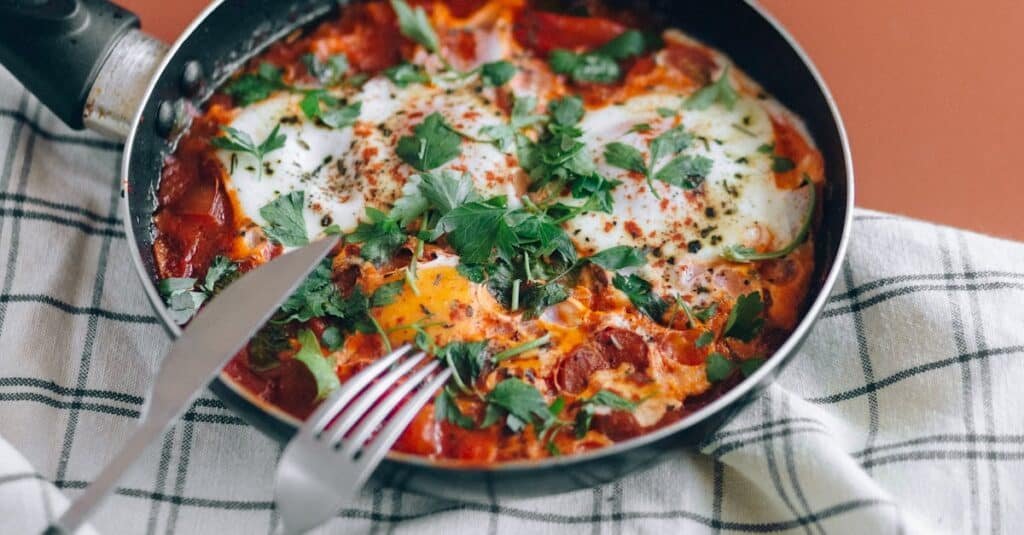The Takeout Savior: How Ready-Made Meals Rescued My Waistline (And Sanity)
Picture this: Sarah, a nurse working 12-hour shifts, stared into her fridge at 10 p.m. after a marathon day. Her “meal prep” plan? A sad Tupperware of wilted spinach and a block of cheese she’d forgotten to grate. Defeated, she grabbed her phone to order greasy pad thai—again. Then she spotted it: a frozen Sweet Earth veggie bowl, glowing like a beacon of hope under the freezer light. “290 calories? Protein? Vegetables? Sold.”
Sarah’s story isn’t unique. For many busy professionals, students, and parents, finding time to cook nutritious meals every day feels nearly impossible. But that doesn’t mean weight loss or a balanced diet is out of reach. Ready-made meals can be a powerful tool in maintaining a healthy lifestyle—if you know how to use them wisely.

The Golden Duo: Portion Control & Calorie Counting
One of the biggest obstacles in maintaining a healthy diet is portion control. It’s easy to misjudge serving sizes when preparing food from scratch, leading to unintentional calorie overload. Ready-made meals solve this by providing precise calorie counts and serving sizes right on the packaging. Brands like Lean Cuisine, Amy’s Kitchen, and PF Chang’s offer a variety of options with clearly labeled nutrition facts, acting as a built-in GPS for your diet.
However, while portion control is helpful, it isn’t a magic fix. These meals should be complemented with smart eating habits, such as:
- Pairing with fresh veggies: Ready meals often lack fiber, so adding a side of roasted vegetables or a fresh salad can boost satiety.
- Hydrating properly: Drinking water before and after meals can help with digestion and prevent overeating.
- Avoiding calorie traps: A 300-calorie meal doesn’t justify a 500-calorie dessert. Stick to nutritious snacks like Greek yogurt or nuts if hunger strikes later.
Know more about Lactose Intolerance
Grocery Store Heroes vs. Online Gourmet
The good news? There are more ready-made meal options than ever before, catering to different dietary needs and preferences.
In-Store Finds:
- Lean Cuisine: Classic low-calorie meals with a focus on balanced nutrition.
- Sweet Earth: Plant-based and nutrient-dense bowls packed with protein.
- Deep Foods: Offers flavorful global cuisine, from Indian curries to Thai-inspired dishes.
Online Delivery Services:
- Factor: Chef-crafted keto and high-protein meals delivered fresh.
- Hungryroot: Customizable meal kits with a focus on whole-food ingredients.
- Purple Carrot: Vegan-friendly meals rich in nutrients.
- Blue Apron: Now offering pre-prepped meals for those who want gourmet flavors with minimal effort.
Having these options eliminates the temptation to grab unhealthy fast food on the go, making weight management much easier.
Processed Foods: The Underdog of Weight Loss?
For years, the term “processed food” has been synonymous with unhealthy eating. However, not all processed foods are created equal. Many modern brands are redefining convenience by offering nutrient-rich, portion-controlled options that fit into a balanced diet.
Take Orgain vegan protein shakes and Huel meal replacement powders, for example. These products provide essential vitamins, minerals, and protein without excessive sugar or artificial ingredients. They serve as a practical alternative when a full meal isn’t an option, making it easier to stay on track with health goals.
What to Look for in Processed Meals:
- High protein content: Helps with satiety and muscle maintenance.
- Balanced macronutrients: Meals with a good mix of protein, fiber, and healthy fats keep you full longer.
- Low added sugar and sodium: Excessive sodium can lead to bloating, while too much sugar spikes energy levels before crashing.
Are you looking to Create Balanced Meals for everyday read our post
The Fine Print: How to Maximize Ready-Made Meals
While these meals can be lifesavers, they work best when combined with a well-rounded approach to health. Here’s how to make the most of them:
- Read Labels Like a Detective: Some meals appear healthy but hide excess sodium, sugar, or preservatives. Choose those with whole ingredients and balanced macros.
- Pair Smartly: Supplement meals with fresh sides like a small serving of fruit, a handful of nuts, or a simple green salad to increase fiber and nutrients.
- Don’t Rely on Them Solely: While convenient, ready-made meals should not replace whole, home-cooked meals entirely. Think of them as a tool in your nutrition toolkit, not the entire toolbox.
The Bottom Line
Sarah lost 15 pounds without touching a frying pan. But she also walked her dog, drank plenty of water, and learned to stop eating when full (a surprisingly underrated habit). Ready-made meals aren’t a magic fix, but they offer a practical, time-saving way to stay on track with health goals.
For those juggling work, family, and personal obligations, having healthy, portion-controlled meals available can mean the difference between a nourishing dinner and a regret-filled takeout order. And sometimes, a gluten-free burrito bowl is exactly the hero we need.
So next time you’re staring into your fridge, exhausted and hungry, remember: Convenience doesn’t have to mean compromise. Now pass the frozen lasagna (the 350-calorie one, please).
Read about Portion Control here.
Answered this same question on Quora.




